#black poplar
Text




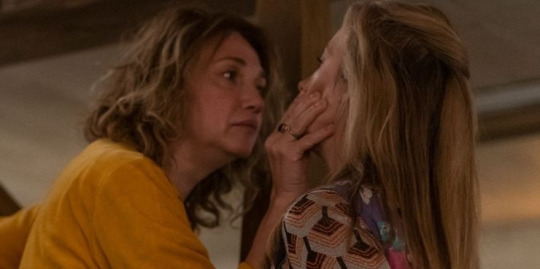



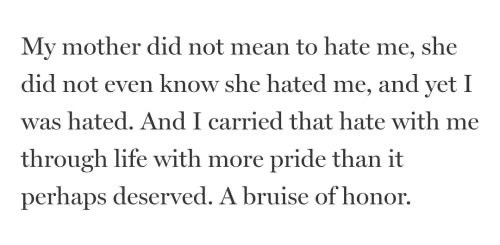

Writer In The Dark, Lorde / Lady Bird (2017) / For One More Day, Mitch Albom / If My Body Could Speak, Blythe Baird / Killing Eve (2018-2022) / Poplar Street, Chen Chen / Class of 2013, Mitski / Black Swan (2010) / Take Care: Mothers, Daughters, and Inheriting Self-Hatred, Ella Wilson / How to Wear your Mothers Lipstick, Warsan Shire
#Mother’s Day#web weaving#Lorde#writer in the dark#lady bird#greta gerwig#for one more day#mitch albom#if my body could speak#blythe baird#killing eve#poplar street#chen chen#class of 2013#mitski#black swan#how to wear your mothers lipstick#warsan shire
1K notes
·
View notes
Photo

Poplars
March ~ 2023
#photographers on tumblr#original photographers#poplars#black and white photography#upton warren#rural landscapes
164 notes
·
View notes
Photo
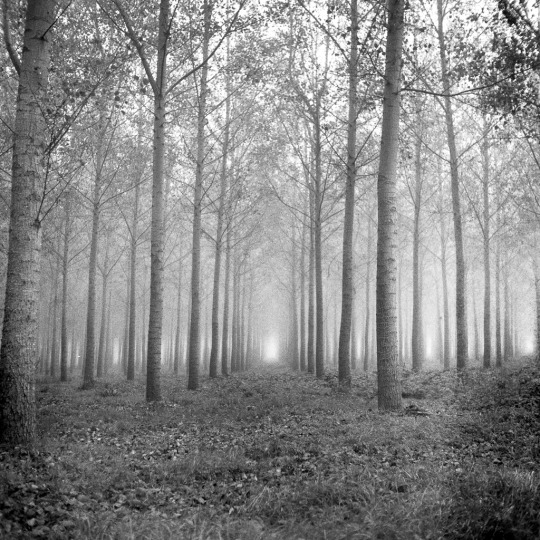
Poplars & Mist
57 notes
·
View notes
Text

#original photographers#photographers on tumblr#landscape#black and white#berlin#lichtenberg#falkenberg#clouds#sky#poplar trees#poplar
102 notes
·
View notes
Text
I've put way too much thought into the wand Reg gets in my fic. And by extension the wand everyone else gets too, ive also discovered as a result that Lily has a wand that to my understanding of what little we know of her (and a lot of her fanon interpretations) simply.... does not fit. And James' wand has no description for the wood, mahogany, on the wiki or on the Wizarding World website.
So now everyone is getting new wands yay.
#anyways Reg gets a yew wand with some extra funsies thrown in#i had to call in my friend to help ick since my short list was 7 woods and i was panicking#im panromantic and polyam i havent made a single choice my entire life#Also im thinking maybe rowan wood for Lily or James#maybe dogwood for James#their wands arent fully picked but Lily's will certainly not be willow#Rowan Red-Oak Cedar Alder mayyybe Holly are all better fits imho#for Lily#for James Dogwood is high on my list Alder as well English Oak Fir Pear Poplar Rowan Spruce is also a fav#wand lore is really fascinating and i wish we both had more info on it and that it was more prevalent in canon#anyways i spent like 4 hours researching send help#dead gay wizards#hp marauders#regulus arcturus black#jegulus#starchaser#regulus deserved better#regulus x james#harry potter marauders#james deserved better#lily evans#regulus black#james fleamont potter#regulus headcanon#marauders headcanon#oh and Sirius' wand is ebony dragon heart string its literally perfect for him
14 notes
·
View notes
Text
Uh, here are some bowls I don't think I have posted pictures of







I have made 33 bowls so far and I think I'm getting pretty good at it!
#wood turning#wood working#yellow pine#bowls#sycamore#oak#rainbow poplar#maple#black Limba#black walnut#maybe I do know what I am doing?
2 notes
·
View notes
Photo

Poplar Dock, East London, June 2022.
#black and white photography#boat#docklands#east london#iphone photography#london#marina#original photographers#photographers on tumblr#photography#poplar dock marina
8 notes
·
View notes
Text
still reeling from waking up this morning to the sound of my neighbours house on fire wtf
#who leaves a bonfire burning overnight next to fireworks in this dry ass heatwave fr#everyone is so so lucky their gas canisters didn't blow tf up but especially them bc i would personally hunt them down and crucify them#i was so freaked out!! my mom was freaked out the cat was freaked out several households came out to look at 6am#giant fucking plume of black smoke next to the poplar tree flames reached the second story grrrrrr im so mad still#it was spreading so fast i had this like animal fear response and then the firemen came and put it out and i had to go to work :|#no one was hurt btw & no main sections of building were damaged just 2 sheds a garage and their new extension
2 notes
·
View notes
Text
oh shit yeah it's moth week. Happy moth week everyone! here are some of our moth photos to celebrate







and a lime hawkmoth caterpillar as a bonus
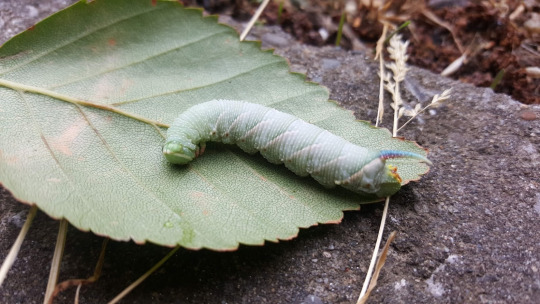
#thoughts#insects#our photos#moths#caterpillars#I know we've posted some of these before but still#I don't know all the species but the top one is an elephant hawkmoth#I'm pretty sure the fourth one (with the black spots) is a small magpie#the green one underneath that is a merveille du jour#then the little brown micromoth under that is a brown house moth#and the one under that seems to be a poplar grey but we're not fully sure
2 notes
·
View notes
Text
NAMM 2024: Ibanez Unveils Exciting RG and S Series Electric Guitars
Ready for NAMM 2024, Ibanez has proudly introduced its stunning 2024 lineup of RG and S Series electric guitars, showcasing an array of striking designs and technical enhancements.
Ibanez RG and S Series Key Updates
– RG Standards: Now featuring direct-mount pickups.
– RG GIOs: Upgraded models with new tremolo units.
– S Premium: A unique, exotic design.
New Features and Colors
The focus has…

View On WordPress
#basswood#Charcoal Black Burst#Cosmic Blue Starburst Flat#Dimarzio#ebony#Edge-Zero II#flame maple#GIO#GRG maple#GRG320FA#GRGR330EX#Ibanez#Infinity R#Instagram#jatoba#maple#meranti#NAMM#NAMM 2024#poplar burl#Quantum#RG421#RG421EX#RG421S#rosewood#S1070PBZ#Stained Wine Red Low Gloss#Wizard III
0 notes
Text
Dames Dine Around September 12
One Night Only Exclusive Fundraising Dining Experience Dames Dine Around
Tickets are now available for the limited, one-night-only Dames Dine Around fundraising celebration on September 12th hosted by some of our favourite restaurants, wineries, and culinary venues across BC at Dames Dine Around Tickets and Menus.
100% of all proceeds go to Les Dames d’Escoffier, BC Chapter scholarship, and…

View On WordPress
#Black Walnut#Boulevard#Brassica#Dames Dine Around#Farmers Apprentice#Globe@YVR#Maenam#Poplar Grove#The Naramata Inn
0 notes
Text

That tree is shedding
#i need to be able to recognise it for my exam tomorrow#it's Populus nigra#or black poplar (i think)
0 notes
Text
prompt: reader is hired as a live in house cleaner because ghost is always away and he only comes back on leave and he insists she stay in the guest room. Over time he increasingly acts like she’s his live in girlfriend or something. Very confusing for reader lmao.
-
The job comes at the exact right time.
The way you stumble onto your new job is a bit dicey, if you’re being honest. You’ve been meaning to get out of the waitressing life for a while—the tips are shit and the number of times that you’ve had your backside pinched has slowly but steadily climbed into the double digits. You just haven’t had direction; somewhere to go.
Your savior comes in the form of a six foot plus soldier. Oh, he doesn’t tell you that, but his body language speaks for itself.
At first, even the sight of him makes your belly clench and palms sweat like when you watch rock climbing documentaries or parkour videos online (all moist and clammy and you have to wipe them on your jeans before shaking his hand). He’s a one-time customer at your little roadside diner that gradually becomes a repeat offender.
He comes at odd times, sometimes disappearing for a month or two before he’s back to sitting in the booth at the back of the diner with his back against the wall. You smile shakily when you pour him coffee after coffee. He never eats. Always sits in the same booth, dressed in the same black hoodie that does nothing to hide the sheer size of him and a black surgical mask that he never removes. He has a sixth sense for when you’re watching him from behind the counter, waiting for him to take a sip.
You never do catch a glimpse of his face. Not completely anyway. You know him only by the faint smell of gunpowder and metal that clings to him like a second skin, and the feeling of his calloused hand against yours.
Like ice slowly chipping off a glacier that one day cracks, a huge chunk splintering off and crashing into the sea, you know nothing about him until you’re suddenly in his house. Simon, he tells you, and the sound of his name awakens something in you. He needs a housekeeper and you need a reason to leave.
You quit the diner; barely even put in a week’s notice.
The day you drive up the long beaten road up to his property, a cabin deep in the English countryside, clear blue skies follow you. Clouds crisp, delicate even. Simon takes you through the house, showing you to the guest room where you’ll be staying while he’s away. He never directly confirms your suspicions, but the faint tightness around his eyes when he mentions his job tells you all you need to know. No wonder he needs someone to keep the house in order. Never around to do it himself.
Then he’s gone, swift as a ghost. You wake up in the guest room to a hastily scrawled note on your bedside table and a faint feeling of loss.
You scrub tiles and dust the top bit of the fan that everyone always misses; you mow the lawn, clean the gutters, and sit under the shade of a poplar tree with a glass of lemonade in the early evenings. If you look up into the tree, you’ll see spiders and squirrel nests. It’s almost therapeutic.
Weeks pass at a time. Simon reemerges like clear skies between periods of rain. Sometimes even before you wake up, you can feel the change like lighting sizzling in the air, crackling hot under your fingertips and then stumbling into the kitchen to find him leaning against the counter, coffee already brewing. You blush into an apology that he waves off.
Good soldier. Better boss.
You fall into a routine, something of a cadence that is only interrupted by Simon’s hands on your hips when he moves you out of the way to grab a mug from the top shelf. His finger brushing over the curve of your cheekbone to wipe away flour smudged on your cheek. Then he’s gone again, passing through like a ghost.
Perhaps he’s a more tactile man than you originally assumed. Something about the way he held himself in those first few weeks in the diner suggested otherwise, the way he seemed to radiate a latent hostility. Do not get close. You read this in the general slope of his eyebrows and the scars across his muscled forearms up until he reaches out to touch you, growing more and more comfortable with you around.
“You alright, love?” said into your ear on a warm night when Simon materializes onto the couch beside you, practically out of thin air. Your heart almost bursts in your chest.
When you turn, he’s as beautiful as ever, honey burnt eyes staring out from behind a balaclava this time. Still dresses in his standard issue tactical pants, the faint smear of grime and gore around the ankles. There’s a lump in your throat when you smile.
He smells richer now. Deeper, like the forest floor. Like crawling through mud and spider webs and a thick, cloying miasma of desperation.
“Sorry—I didn’t know you’d be back,” you apologize, going to rise up to your feet. It feels wrong to commandeer his house when he’s on leave, even though you live here too.
A heavy hand on your shoulder pulls you down, settling you to his side. “Off your feet now—there you go, atta girl. No sense getting up; show’s not even done.”
He angles you back to face the TV and tugs you into his lap almost effortlessly. You do not look back, even when you feel him slip the balaclava off, hot breath fanning over your neck. Not even when fingers play over the thin line of skin where your shirt rides up. You blink like your eyes are gummy and try not to shudder when his thumb dips underneath your shirt.
#cod mw2#ghost cod#cod x reader#cod simon riley#simon ghost riley#simon riley#ghost/reader#simon ghost riley x reader#ghost x reader#simon riley x you#ceil writing#house cleaner au
8K notes
·
View notes
Text
altars for greek gods
this post includes hades, persephone, artemis, apollo, aphrodite, hermes, and hekate. for part 2 including zeus, hera, poseidon, hestia, hephaestus, dionysus, ares, demeter, and athena click here.
keep in mind that typical offerings to any god includes meat, wine, grain (specifically barley), honey, and incense (myrrh and frankincense would be period appropriate), but i'm listing some specific offerings that can be given if you'd like
colors can be used for candles, banners, decor, whatever you want
HADES
Colors: black, red, and white for association with death. purple and metallics for association with riches/wealth
Offerings: mint, asphodel, white poplar, pomegranate, coffee, cinnamon, elm, money, chocolate
Crystals: gemstones, black crystals (obsidian, black tourmaline, smokey quartz, etc.), pyrite, hematite, labradorite
Animals: black ram, owl, serpent, Cerberus
PERSEPHONE
Colors: purple, pink, yellow, green for association with springtime. black and metallics for association with Hades. white for purity.
Offerings: pomegranate, flowers, grains, asphodel, lavender, rosemary
Crystals: amethyst, gemstones, moss/tree agate, milk quartz, jade, lepidolite
Animals: deer, ram, bat, talking birds (including parrots)
APHRODITE
Colors: red and pink for love/sexuality. white and blue for association with the ocean. gold for association with, well, gold.
Offerings: roses, chocolate, shells, myrrh, gold
Crystals: rose quartz, pearl, emerald, opal, aquamarine, rhodonite, rhodochrosite, ocean jasper, morganite
Animals: swan, dove, hare
ARTEMIS
Colors: white, blue, black, and grey for association with the heavens. brown and green for association with nature/the hunt.
Offerings: moon shaped foods, frankincense, cypress, mugwort, amaranth
Crystals: morganite, moonstone, aventurine, selenite, celestite, moss/tree agate, amethyst, quartz (specific dendritic), labradorite
Animals: deer, wolf, wild boar
APOLLO
Colors: yellow, white, and blue for association with the heavens. red, orange, and pink for healing. purple and green for the Oracle
Offerings: sun shaped foods, bay leaves, laurel, cypress, playing music, poetry
Crystals: sunstone, amber, calcite (specifically honey and yellow), quartz (specifically rutilated or clear), rose quartz
Animals: cow, snake, hawk, crow/raven, cicada, swan
HERMES
Colors: green and gold for money/luck. white and brown for travels.
Offerings: money, crocus/saffron, strawberries
Crystals: jade, malachite, fluorite, pyrite, lapis lazuli, citrine, alexandrite
Animals: tortoise, ram
HEKATE
Colors: purple, blue, and green for magic. red and black for association with underworld
Offerings: garlic, saffron, crossroad dirt, black salt, ashes, sage, cedar, yew
Crystals: labradorite, obsidian, hematite, black tourmaline, amethyst, bloodstone, serpentine, lepidolite
Animals: wolf, boar, serpent, lion, horse, cow
#pagan#paganism#polytheist#witchblr#witchcraft#polytheism#witch#magic#magick#ancient greece#hellenic paganism#hellenic polytheism#hellenic pagan#hellenic deities#hellenic gods#greek polytheism#greek mythology#greek gods#ancient greek mythology#ancient greek#altar#deity#deity work#deity worship#hades#persephone#artemis#aphrodite#hermes#hecate
2K notes
·
View notes
Text
There, in the sunlit forest on a high ridgeline, was a tree I had never seen before.
I spend a lot of time looking at trees. I know my beech, sourwood, tulip poplar, sassafras and shagbark hickory. Appalachian forests have such a diverse tree community that for those who grew up in or around the ancient mountains, forests in other places feel curiously simple and flat.
Oaks: red, white, black, bur, scarlet, post, overcup, pin, chestnut, willow, chinkapin, and likely a few others I forgot. Shellbark, shagbark and pignut hickories. Sweetgum, serviceberry, hackberry, sycamore, holly, black walnut, white walnut, persimmon, Eastern redcedar, sugar maple, red maple, silver maple, striped maple, boxelder maple, black locust, stewartia, silverbell, Kentucky yellowwood, blackgum, black cherry, cucumber magnolia, umbrella magnolia, big-leaf magnolia, white pine, scrub pine, Eastern hemlock, redbud, flowering dogwood, yellow buckeye, white ash, witch hazel, pawpaw, linden, hornbeam, and I could continue, but y'all would never get free!
And yet, this tree is different.
We gather around the tree as though surrounding the feet of a prophet. Among the couple dozen of us, only a few are much younger than forty. Even one of the younger men, who smiles approvingly and compliments my sharp eye when I identify herbs along the trail, has gray streaking his beard. One older gentleman scales the steep ridge slowly, relying on a cane for support.
The older folks talk to us young folks with enthusiasm. They brighten when we can call plants and trees by name and list their virtues and importance. "You're right! That's Smilax." "Good eye!" "Do you know what this is?—Yes, Eupatorium, that's a pollinator's paradise." "Are you planning to study botany?"
The tree we have come to see is not like the tall and pillar-like oaks that surround us. It is still young, barely the diameter of a fence post. Its bark is gray and forms broad stripes like rivulets of water down smooth rock. Its smooth leaves are long, with thin pointed teeth along their edges. Some of the group carefully examine the bark down to the ground, but the tree is healthy and flourishing, for now.
This tree is among the last of its kind.
The wood of the American Chestnut was once used to craft both cradles and coffins, and thus it was known as the "cradle-to-grave tree." The tree that would hold you in entering this world and in leaving it would also sustain your body throughout your life: each tree produced a hundred pounds of edible nuts every winter, feeding humans and all the other creatures of the mountains. In the Appalachian Mountains, massive chestnut trees formed a third of the overstory of the forest, sometimes growing larger than six feet in diameter.
They are a keystone species, and this is my first time seeing one alive in the wild.
It's a sad story. But I have to tell you so you will understand.
At the turn of the 20th century, the chestnut trees of Appalachia were fundamental to life in this ecosystem, but something sinister had taken hold, accidentally imported from Asia. Cryphonectria parasitica is a pathogenic fungus that infects chestnut trees. It co-evolved with the Chinese chestnut, and therefore the Chinese chestnut is not bothered much by the fungus.
The American chestnut, unlike its Chinese sister, had no resistance whatsoever.
They showed us slides with photos of trees infected with the chestnut blight earlier. It looks like sickly orange insulation foam oozing through the bark of the trees. It looks like that orange powder that comes in boxes of Kraft mac and cheese. It looks wrong. It means death.
The chestnut plague was one of the worst ecological disasters ever to occur in this place—which is saying something. And almost no one is alive who remembers it. By the end of the 1940's, by the time my grandparents were born, approximately three to four billion American chestnut trees were dead.
The Queen of the Forest was functionally extinct. With her, at least seven moth species dependent on her as a host plant were lost forever, and no one knows how much else. She is a keystone species, and when the keystone that holds a structure in place is removed, everything falls.
Appalachia is still falling.
Now, in some places, mostly-dead trees tried to put up new sprouts. It was only a matter of time for those lingering sprouts of life.
But life, however weak, means hope.
I learned that once in a rare while, one of the surviving sprouts got lucky enough to successfully flower and produce a chestnut. And from that seed, a new tree could be grown. People searched for the still-living sprouts and gathered what few chestnuts could be produced, and began growing and breeding the trees.
Some people tried hybridizing American and Chinese chestnuts and then crossing the hybrids to produce purer American strains that might have some resistance to the disease. They did this for decades.
And yet, it wasn't enough. The hybrid trees were stronger, but not strong enough.
Extinction is inevitable. It's natural. There have been at least five mass extinctions in Earth's history, and the sixth is coming fast. Many people accepted that the American chestnut was gone forever. There had been an intensive breeding program, summoning all the natural forces of evolution to produce a tree that could survive the plague, and it wasn't enough.
This has happened to more species than can possibly be counted or mourned. And every species is forced to accept this reality.
Except one.
We are a difficult motherfucker of a species, aren't we? If every letter of the genome's book of life spelled doom for the Queen of the Forest, then we would write a new ending ourselves. Research teams worked to extract a gene from wheat and implant it in the American chestnut, in hopes of creating an American chestnut tree that could survive.
This project led to the Darling 58, the world's first genetically modified organism to be created for the purpose of release into the wild.
The Darling 58 chestnut is not immune, the presenters warned us. It does become infected with the blight. And some trees die. But some live.
And life means hope.
In isolated areas, some surviving American Chestnut trees have been discovered, most of them still very young. The researchers hope it is possible that some of these trees may have been spared not because of pure luck, but because they carry something in their genes that slows the blight in doing its deadly work, and that possibly this small bit of innate resistance can be shaped and combined with other efforts to create a tree that can live to grow old.
This long, desperate, multi-decade quest is what has brought us here. The tree before me is one such tree: a rare survivor. In this clearing, a number of other baby chestnut trees have been planted by human hands. They are hybrids of the Darling 58 and the best of the best Chinese/American hybrids. The little trees are as prepared for the blight as we can possibly make them at this time. It is still very possible that I will watch them die. Almost certainly, I will watch this tree die, the one that shades us with her young, stately limbs.
Some of the people standing around me are in their 70's or 80's, and yet, they have no memory of a world where the Queen of the Forest was at her full majesty. The oldest remember the haunting shapes of the colossal dead trees looming as if in silent judgment.
I am shaken by this realization. They will not live to see the baby trees grow old. The people who began the effort to save the American chestnut devoted decades of their lives to these little trees, knowing all the while they likely never would see them grow tall. Knowing they would not see the work finished. Knowing they wouldn't be able to be there to finish it. Knowing they wouldn't be certain if it could be finished.
When the work began, the technology to complete it did not exist. In the first decades after the great old trees were dead, genetic engineering was a fantasy.
But those that came before me had to imagine that there was some hope of a future. Hope set the foundation. Now that little spark of hope is a fragile flame, and the torch is being passed to the next generation.
When a keystone is removed, everything suffers. What happens when a keystone is put back into place? The caretakers of the American chestnut hope that when the Queen is restored, all of Appalachia will become more resilient and able to adapt to climate change.
Not only that, but this experiment in changing the course of evolution is teaching us lessons and skills that may be able to help us save other species.
It's just one tree—but it's never just one tree. It's a bear successfully raising cubs, chestnut bread being served at a Cherokee festival, carbon being removed from the atmosphere and returned to the Earth, a wealth of nectar being produced for pollinators, scientific insights into how to save a species from a deadly pathogen, a baby cradle being shaped in the skilled hands of an Appalachian crafter. It's everything.
Despair is individual; hope is an ecosystem. Despair is a wall that shuts out everything; hope is seeing through a crack in that wall and catching a glimpse of a single tree, and devoting your life to chiseling through the wall towards that tree, even if you know you will never reach it yourself.
An old man points to a shaft of light through the darkness we are both in, toward a crack in the wall. "Do you see it too?" he says. I look, and on the other side I see a young forest full of sunlight, with limber, pole-size chestnut trees growing toward the canopy among the old oaks and hickories. The chestnut trees are in bloom with fuzzy spikes of creamy white, and bumblebees heavy with pollen move among them. I tell the man what I see, and he smiles.
"When I was your age, that crack was so narrow, all I could see was a single little sapling on the forest floor," he says. "I've been chipping away at it all my life. Maybe your generation will be the one to finally reach the other side."
Hope is a great work that takes a lifetime. It is the hardest thing we are asked to do, and the most essential.
I am trying to show you a glimpse of the other side. Do you see it too?
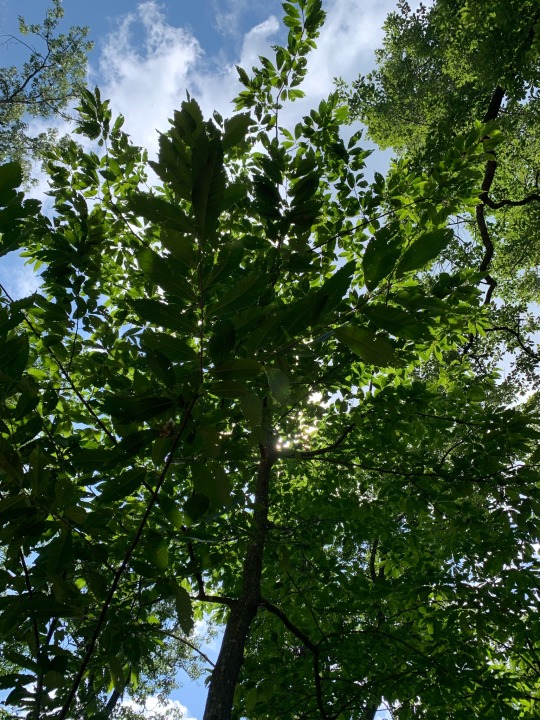
#american chestnut#hope#climate change#biodiversity crisis#climate crisis#trees#plantarchy#learning to imagine the future
3K notes
·
View notes
